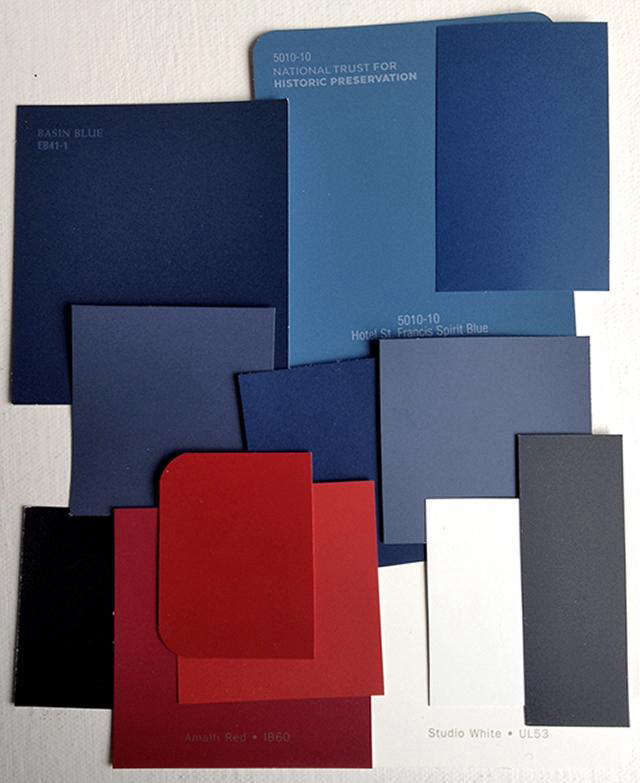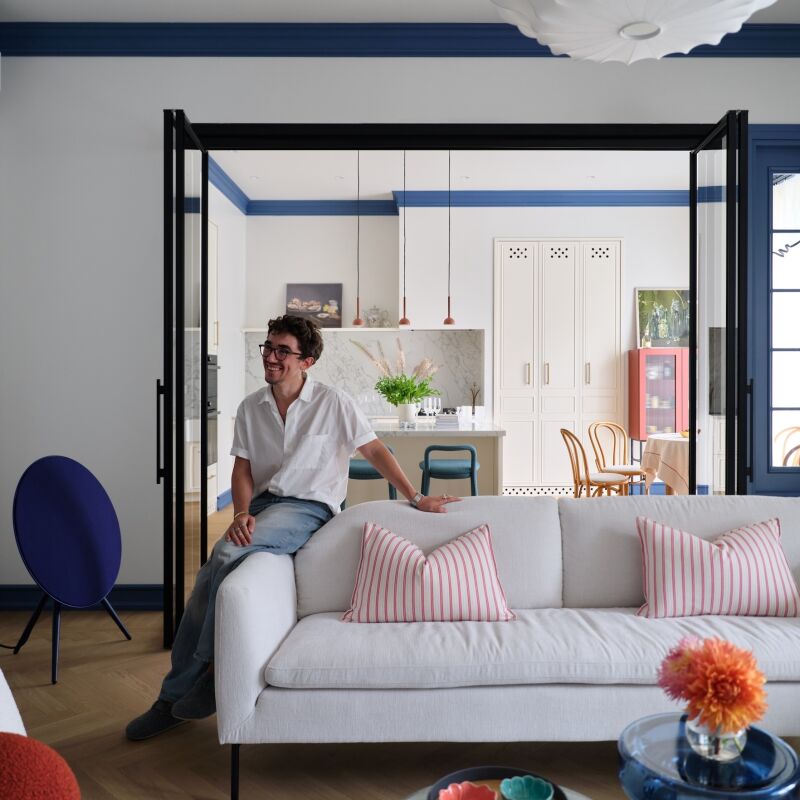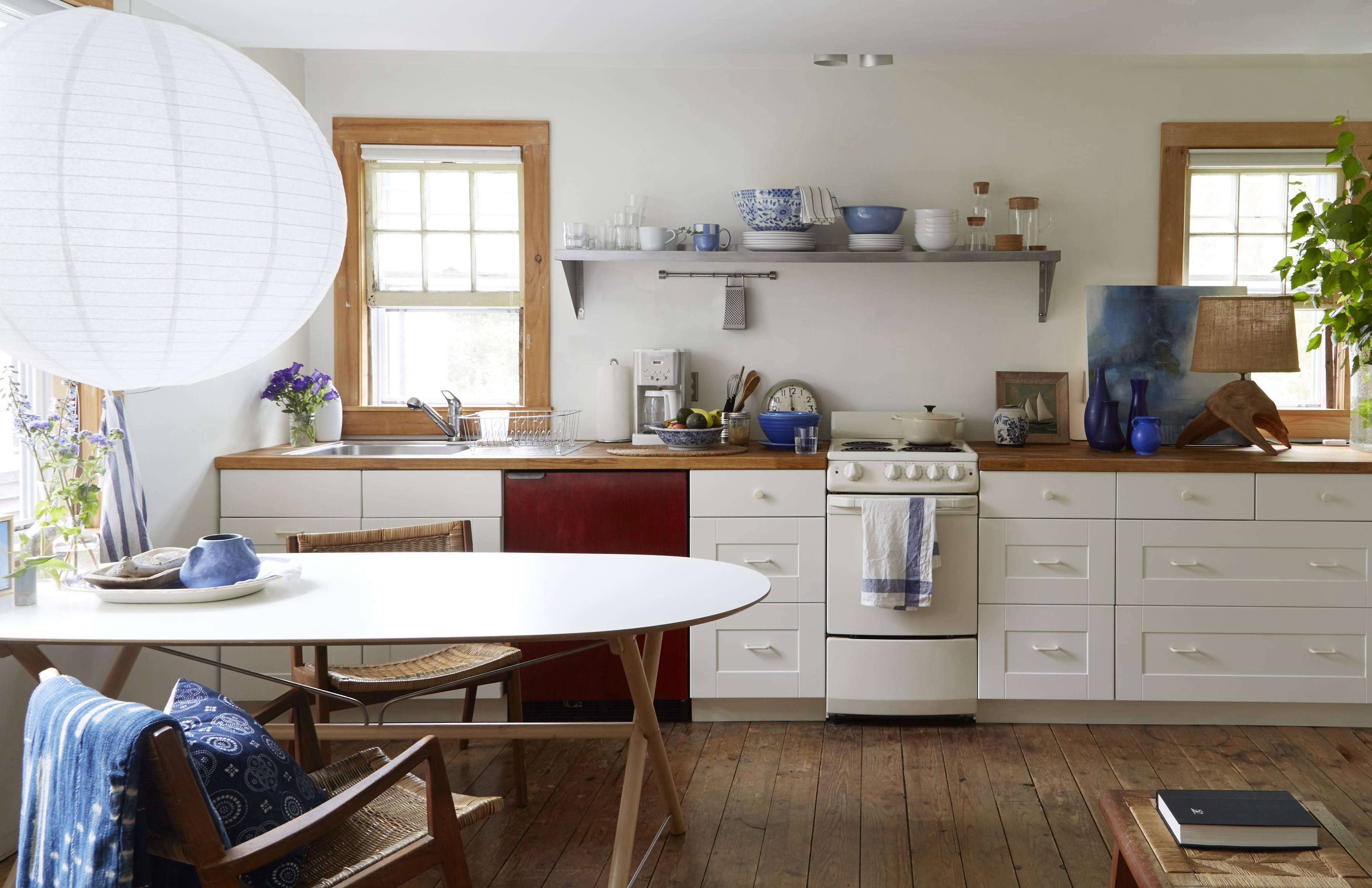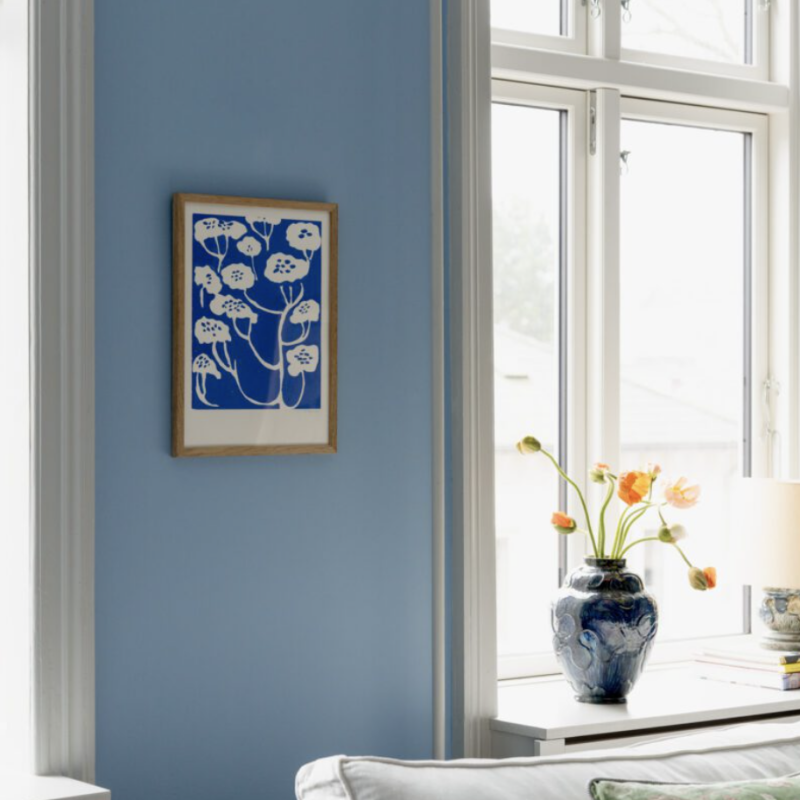We asked celebrated “paint whisperer” Eve Ashcraft (see Required Reading: The Right Color by Eve Ashcraft) to analyze our favorite indigo room.
“Indigo was once a guarded pigment, used as a dye by members of secretive and powerful textile guilds, and the color still evokes mystery. The bar at the Saint Cecilia Hotel in Austin, Texas, demonstrates how the color indigo can create mood and command space; in this room, the deep color is alluring, the perfect invitation to linger over a drink. A chevron-patterned floor in bold black and white ties it all together, turning what could be a sedate space into a dynamic environment. And finally, upholstery in lipstick red is the switch that turns the room on.”

Above: “Cloaking the walls with indigo provides a dramatic backdrop, while extending the color across the ceiling makes the lounge a more intimate space. Handsome black trim adds a modern aspect to the room,” says Ashcraft. Photograph by Michael A. Muller.

Above: “White elements like the marble tabletops and the fireplace wall (not to mention the albino peacock) bounce light around and also balance the dark elements,” she says. Photograph by Michael A. Muller.

Above: Eve Ashcraft’s paint palette shows how indigo can work with other colors (clockwise from top L): Eddie Bauer/Valspar Basin Blue EB41-1, National Trust for Historic Preservation Hotel St. Francis Spirit Blue 5010-10, Pratt & Lambert Spanish Blue 25-16, Benjamin Moore Van Deusen Blue HC-156, Farrow & Ball Railings No. 31, Benjamin Moore Winter White 2140-70, Ralph Lauren Studio White UL53, Ralph Lauren Amalfi Red IB60, Benjamin Moore Neon Red 2087-10, Fine Paints of Europe Select Collection #9340, Benjamin Moore Black Satin 2131-10, Benjamin Moore Newburyport Blue HC-155, Benjamin Moore Marine Blue 2059-10.
Frequently asked questions
Who is Eve Ashcraft?
Eve Ashcraft is a color consultant and author of the book 'The Right Color'. She has worked with numerous clients, including major brands, and is known for her expertise in color palettes.
What is an indigo palette?
An indigo palette is a color scheme that is based on shades of indigo, a deep blue-purple color. It can include other hues that complement or contrast with indigo, such as blues, greens, and neutrals.
Why is indigo a good color for interiors?
Indigo is a soothing and sophisticated color that can add depth and richness to a room. It also pairs well with other colors and can serve as a neutral base for a variety of styles.
What are some tips for using indigo in a room?
Eve Ashcraft recommends using indigo in small doses, such as on accent walls, pillows, and accessories. It can also be paired with lighter or brighter colors to create contrast and balance. Additionally, indigo looks great with natural materials and textures, such as wood and linen.
What is color temperature?
Color temperature refers to how warm or cool a color appears. Blue and purple hues, such as indigo, are considered cool colors, while yellows and reds are warm colors.
How can I choose the right colors for my home?
Eve Ashcraft suggests starting with a favorite piece of art or furniture and using it as a starting point for a color palette. She also recommends considering the room's natural light and how different colors will look in various lighting situations. Additionally, it can be helpful to consult with a color expert or designer.




Have a Question or Comment About This Post?
Join the conversation